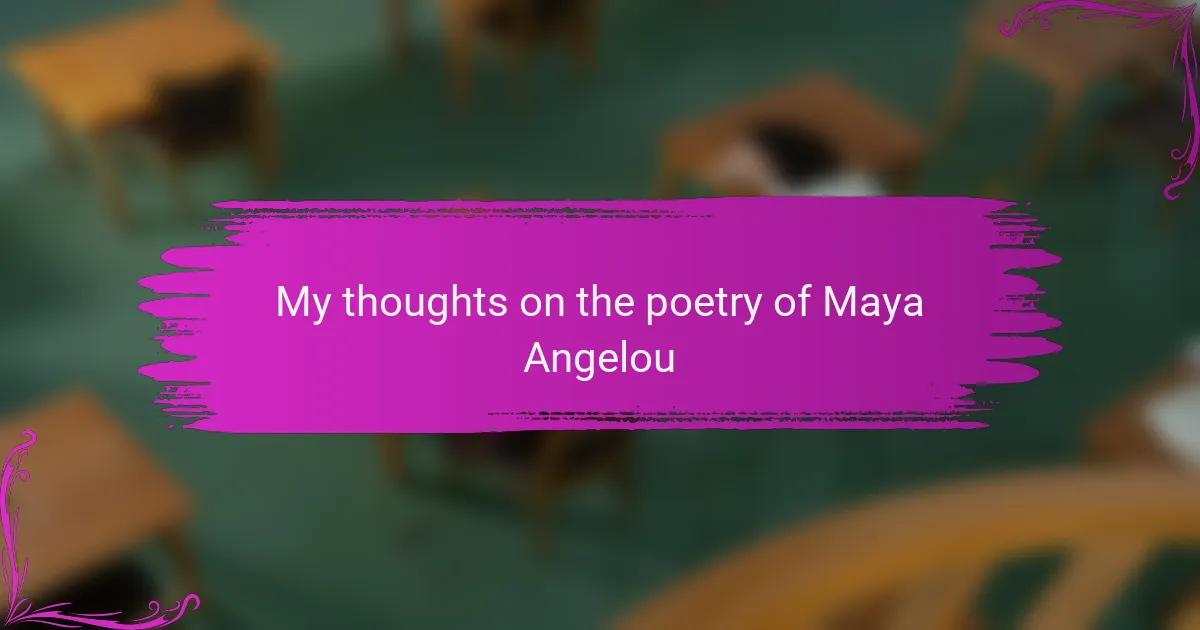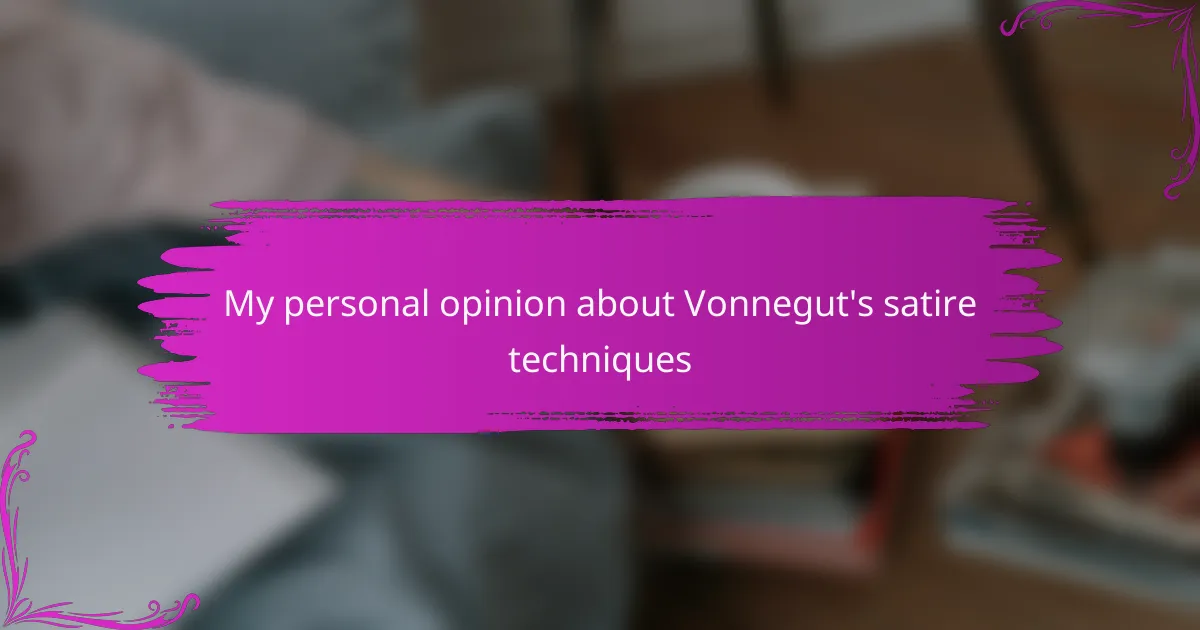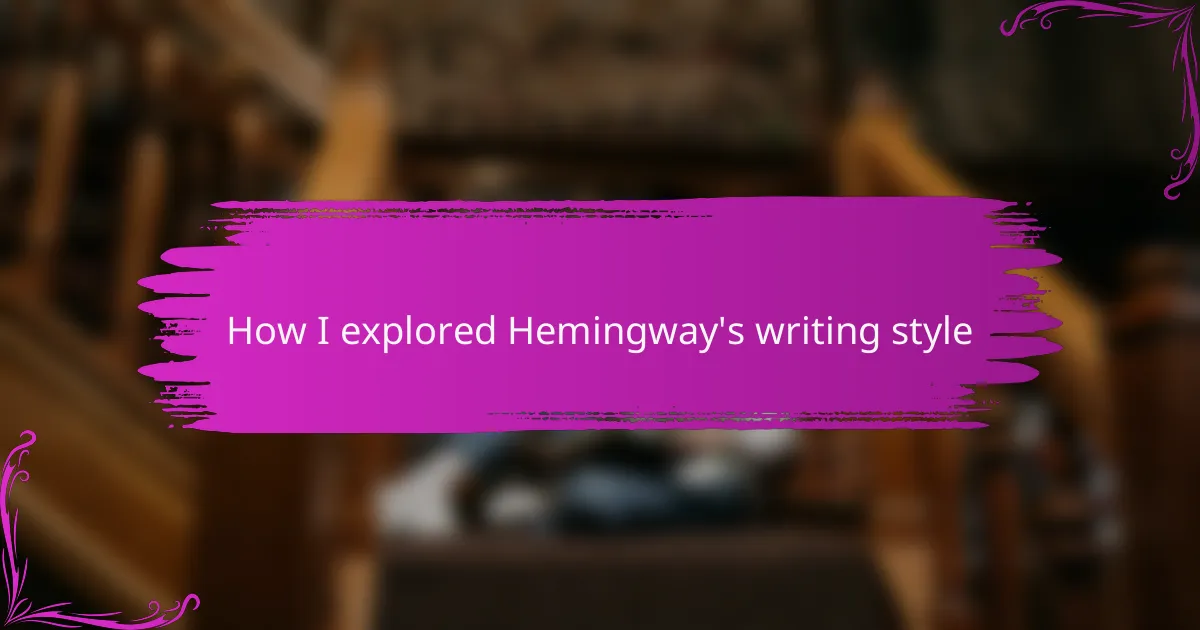Key takeaways
- Maya Angelou’s poetry explores themes of resilience, identity, and empowerment, often drawn from her personal experiences.
- Her use of vivid imagery and rhythmic language creates powerful emotional connections with readers.
- Poetry in education fosters emotional expression, critical thinking, and creativity, allowing students to engage deeply with social issues.
- Recommended resources include her autobiography and complete poetry collection, as well as multimedia materials to enhance understanding of her work.
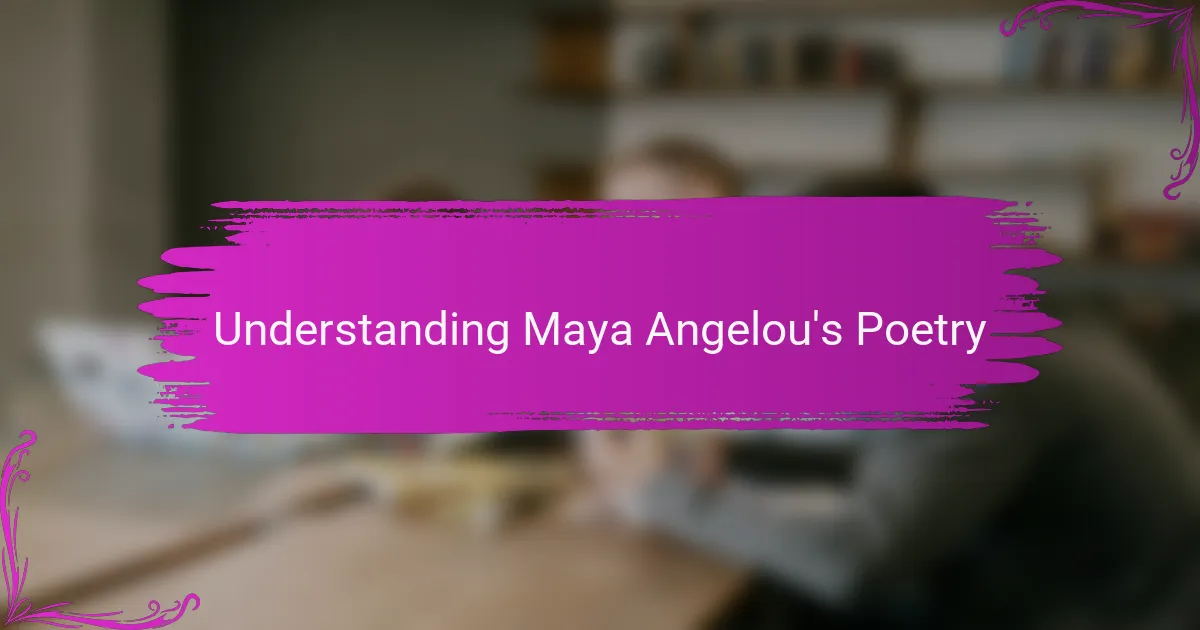
Understanding Maya Angelou’s Poetry
Maya Angelou’s poetry resonates deeply with themes of identity, resilience, and the human experience. In her work, she often draws from her own life, infusing her verses with a raw authenticity that can evoke a range of emotions. I remember the first time I read “Still I Rise”—the defiance and hope within those lines made me reflect on my own challenges and triumphs.
To fully grasp Angelou’s poetry, consider these key aspects:
- Personal History: Much of her work is autobiographical, drawing from her experiences with racism, trauma, and empowerment.
- Themes of Resilience: Her poems often celebrate strength in overcoming adversity, showcasing the human spirit’s capacity to rise above struggles.
- Use of Language: Angelou’s lyrical language is accessible yet profound, making her messages resonate with a wide audience.
- Cultural Significance: Her poetry reflects the African American experience, serving as both a personal narrative and a collective voice.
- Challenging Injustice: She addresses social issues head-on, encouraging readers to confront and challenge the status quo.
Reflecting on these elements can enhance your understanding and appreciation of her powerful words.
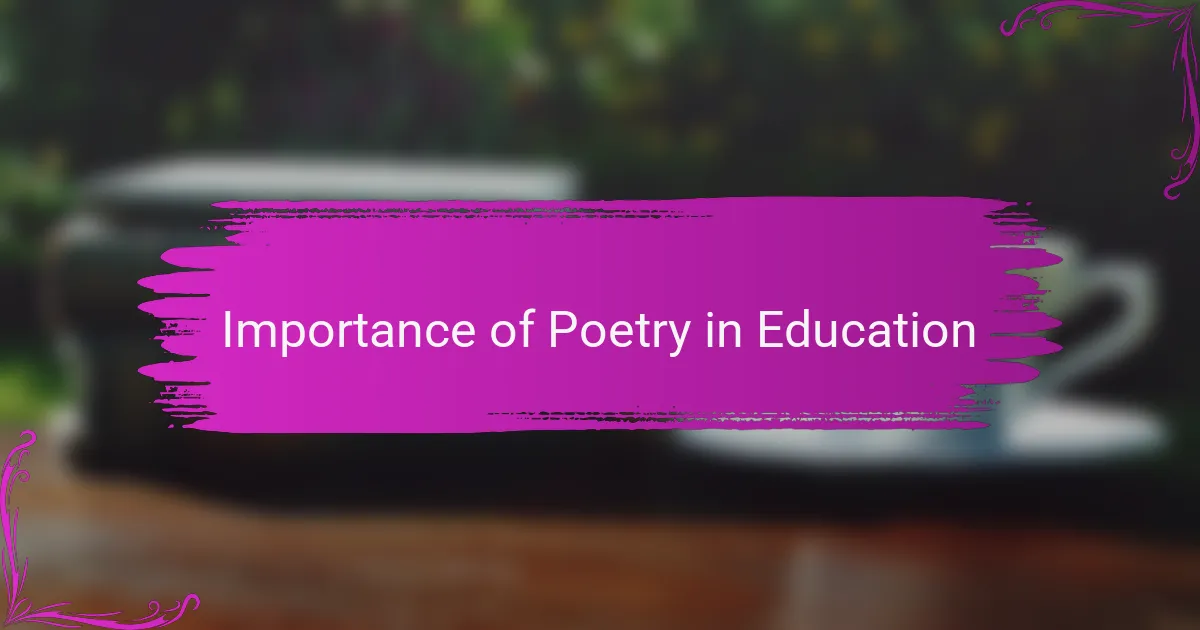
Importance of Poetry in Education
Poetry plays a vital role in education by encouraging emotional expression and critical thinking. I’ve noticed that when students engage with poetry, they often articulate feelings they might struggle to express otherwise. Isn’t it fascinating how a few carefully chosen words can spark deep conversations about identity, culture, and personal experiences?
Moreover, poetry serves as a gateway to understanding complex themes and social issues. For instance, studying Maya Angelou’s work allows students to confront historical injustices and explore their impact on today’s society. I remember discussing “Caged Bird” with my classmates, and it opened our eyes to the power of voice and freedom. How often do we overlook the strength of a poem to inspire social change?
Additionally, poetry fosters creativity in language and thought. When students read and write poetry, they experiment with diction, imagery, and rhythm. I often encourage my students to create their own verses in response to poems we study; the joy and pride they feel when expressing themselves creatively is a sight to behold. Isn’t that what education should ultimately aim for—empowering individuals to find their unique voices?
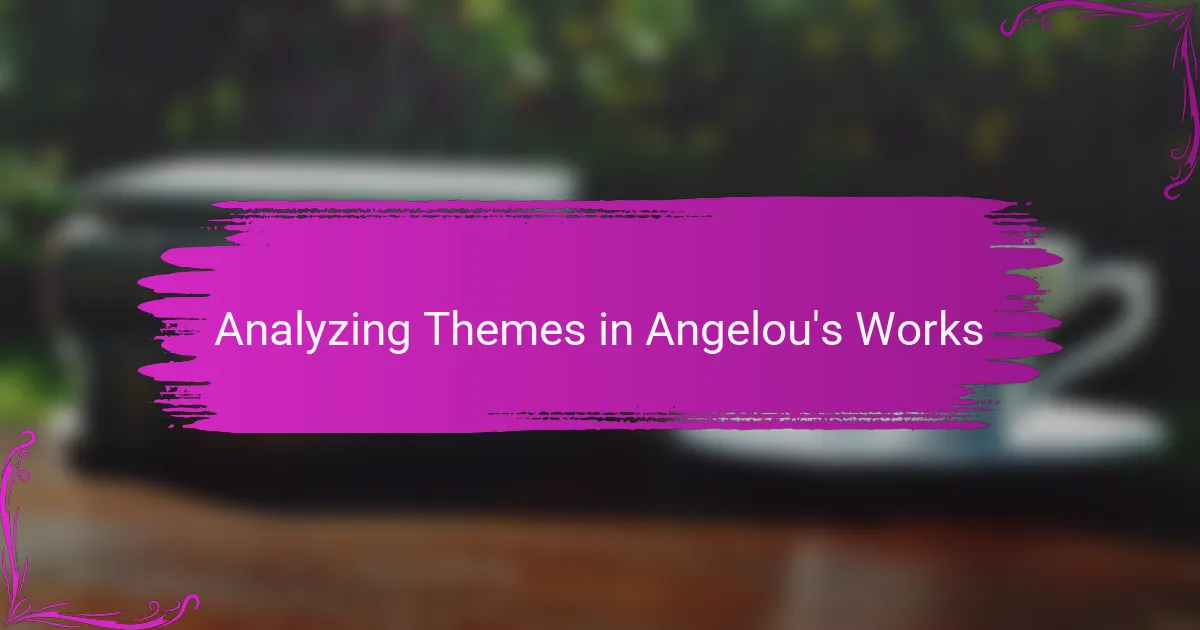
Analyzing Themes in Angelou’s Works
Maya Angelou’s poetry resonates deeply with themes of resilience and empowerment, often reflecting her own life experiences. I remember first encountering her poem “Still I Rise” during a college class. The confidence and defiance in her words stirred something inside me, making me realize how powerful it is to rise above adversity, a sentiment that many readers can relate to on a personal level.
Angelou also explores themes of identity and the complexity of the human experience, bridging personal narratives with universal truths. In “Phenomenal Woman,” for instance, she celebrates body positivity and self-acceptance, which reminds us that true beauty comes from within. It’s these honest portrayals that left a lasting impression on me and shaped my understanding of self-worth.
- Resilience in the face of adversity
- The celebration of identity and self-acceptance
- Empowerment through personal storytelling
- The intertwining of personal and collective experiences
- Exploration of social justice issues

Techniques Used by Maya Angelou
Maya Angelou’s poetry showcases a mastery of various techniques that resonate deeply with readers. One standout technique is her use of vivid imagery, which creates a rich tapestry of emotion and experience. For instance, in her poem “Still I Rise,” I remember how the powerful visuals stirred a sense of resilience within me, making her themes of strength and perseverance unforgettable.
Another significant aspect of her work is her rhythmic use of language, influenced by her background in music and spoken word. The cadence she employs almost makes her poems feel like songs, which can evoke deep emotions. Each line compels you to read aloud, and I often find myself pausing to appreciate her choice of words, feeling as if I’m conversing directly with her.
- Imagery: Angelou paints powerful pictures with her words, like a painter uses colors on a canvas.
- Rhythm: The musical quality of her language draws readers in and makes her poetry feel alive.
- Repetition: She skillfully emphasizes key themes, creating a sense of persistence and urgency.
- Metaphor and Simile: Her comparisons deepen the emotional resonance and connect abstract ideas to concrete experiences.
- Personal Narrative: By intertwining her life experiences, she fosters a sense of intimacy and authenticity in her work.
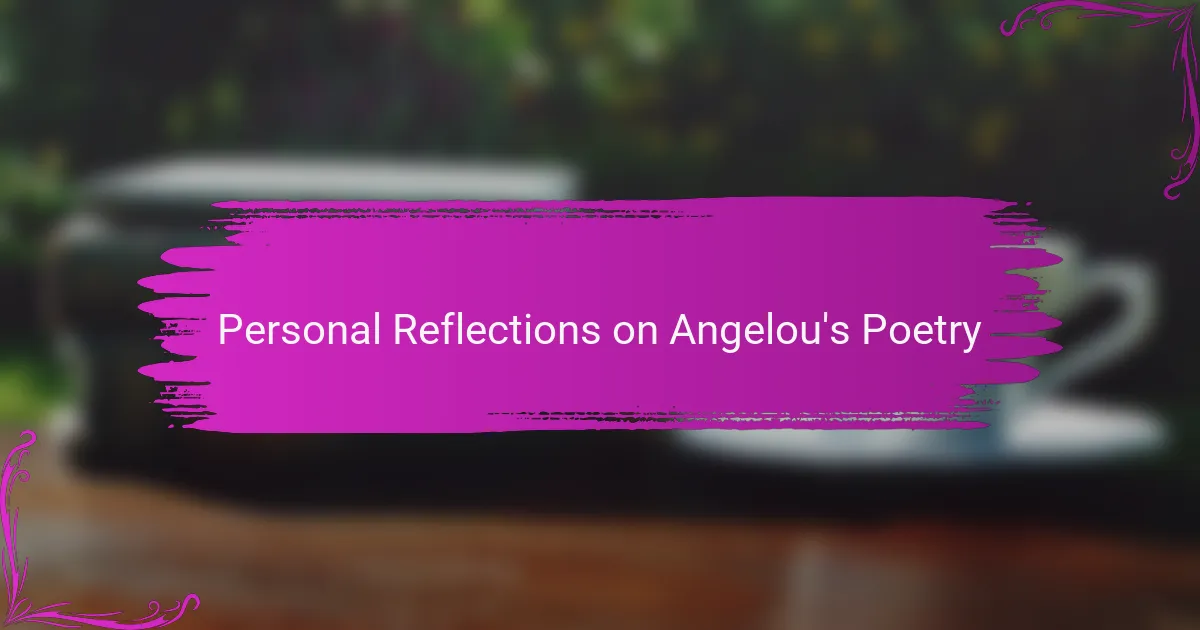
Personal Reflections on Angelou’s Poetry
Maya Angelou’s poetry resonates deeply with me due to its powerful themes of resilience and self-empowerment. In her work, I often find a reflection of struggles and triumphs that echo my own experiences, making her words feel like a comforting embrace. For instance, reading “Still I Rise” for the first time was a transformative experience; it inspired me to embrace my strengths, no matter the challenges I faced.
Another aspect that stands out is her use of vivid imagery and lyrical style, which paints emotions so clearly. I remember getting lost in the beauty of “Phenomenal Woman,” where Angelou celebrates the confidence that comes from self-acceptance. It’s a reminder that our uniqueness is our strength.
Her poetry doesn’t just speak to the individual; it connects with the collective experience of marginalized voices, reminding us of the power in unity. It’s this blend of personal and universal that truly makes her work impactful for readers like me.
| Aspect | Angelou’s Poetry |
|---|---|
| Themes | Resilience, empowerment, identity |
| Imagery | Strong, vivid; evokes deep emotion |
| Style | Lyrical, personal, relatable |
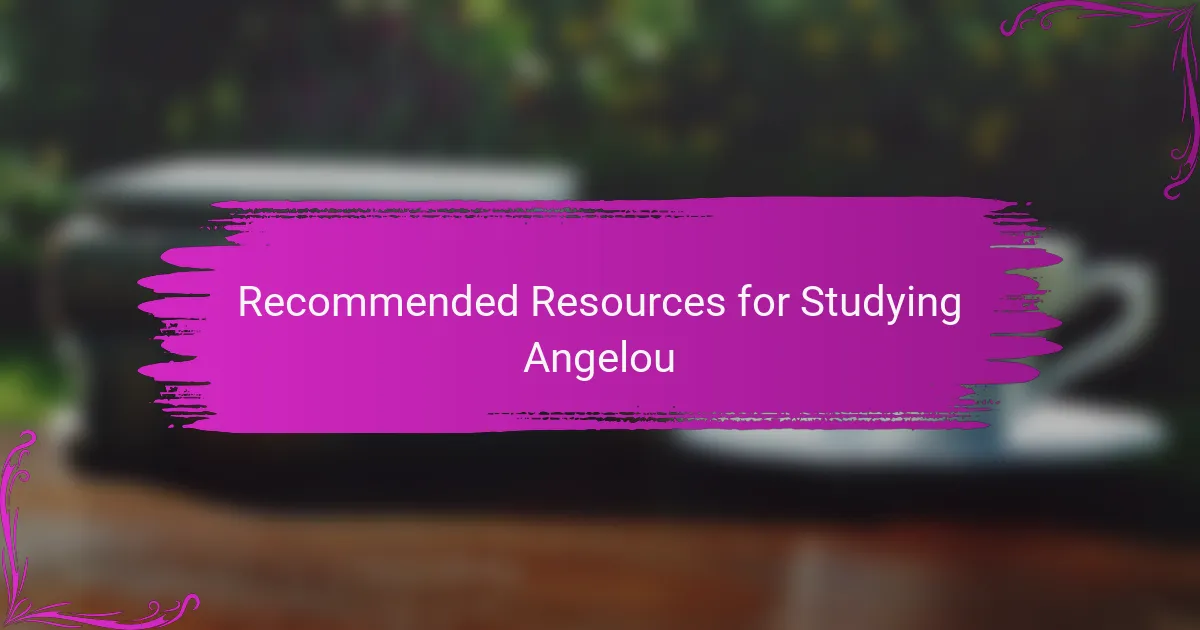
Recommended Resources for Studying Angelou
When diving into the poetry of Maya Angelou, I often encourage readers to explore a mix of both classic and contemporary resources. Her work resonates on so many levels, and I’ve found that reading criticisms alongside her poems adds depth to the experience. For example, finding academic papers that analyze the themes of resilience and identity can offer new perspectives that enrich your understanding.
Alongside standard texts, I believe it’s essential to engage with multimedia resources. Hearing Angelou’s own voice, whether through interviews or readings, brings a unique emotional weight that can transform your interpretation of her work. Her delivery undoubtedly enhances the impact, making it an invaluable part of studying her poetry.
Recommended Resources:
- “I Know Why the Caged Bird Sings” (Autobiography) – A powerful look at her life and the experiences that shaped her poetry.
- “The Complete Collected Poems of Maya Angelou” – A must-have for access to her entire poetic portfolio.
- Documentary features, such as Maya Angelou: And Still I Rise – Offers insights into her life and thoughts directly from the source.
- Academic journals and articles available via JSTOR or Google Scholar – Perfect for diving deeper into critical analyses of her work.
- Poetry podcasts that focus on her readings and their meanings – Engaging discussions that can shed light on subtle themes.
